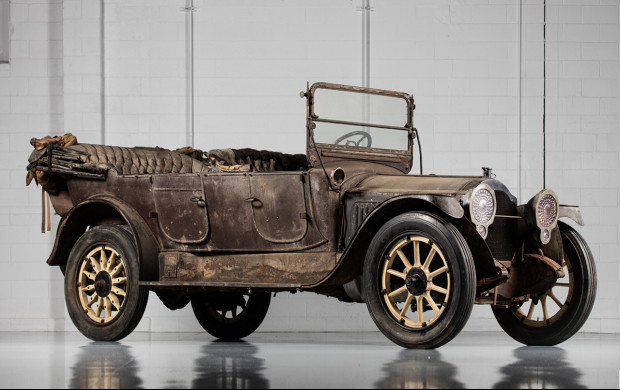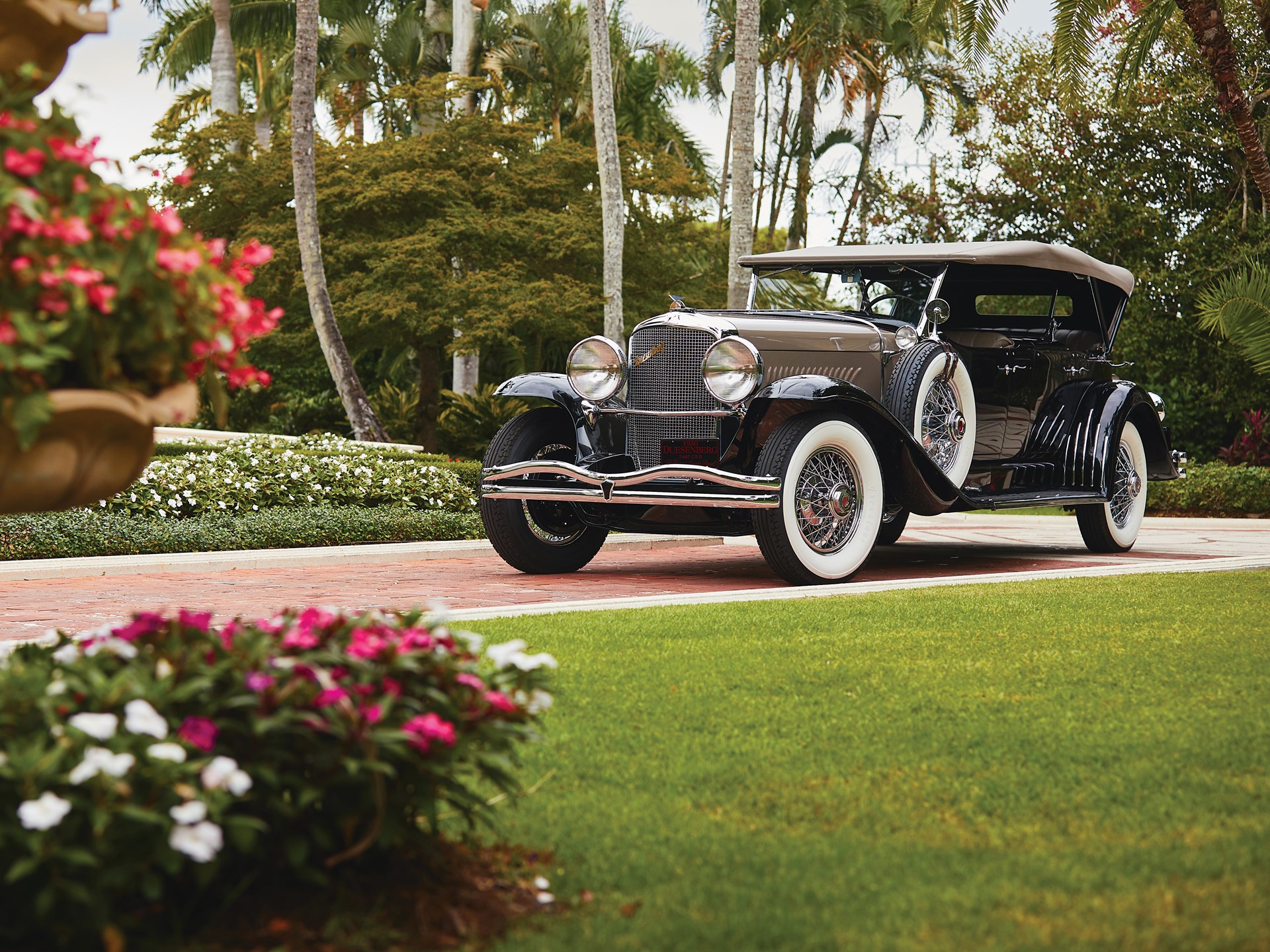Media | Articles
5 pre-war classics that will always be collectible
Scattered among a plethora of Porsches, multitude of Mercedes, and flotilla of Ferraris at the Amelia Island auctions March 7–10, you’ll find a remarkable assortment of pre-war cars that date to the dawn of the automotive age.
This year’s event includes a stunning selection of golden-age classics, including cars from iconic marques like Hispano-Suiza, Duesenberg, and Bugatti. We’d be hard-pressed to pick a favorite, so here are five that caught our eye.
1903 Oldsmobile Model R

Lot 241 (Bonhams)
Estimate: $50,000–$70,000
Marketplace
Buy and sell classics with confidence
Automobiles were luxury items reserved for the wealthy when Ransom E. Olds founded Oldsmobile in 1897. He hoped to change that with the Model R “Curved Dash,” the horseless carriage he started selling for $650 in 1903. At that price, the car wasn’t cheap, but it was at least attainable to the average consumer.
It helped that the car provided what people wanted most at the time: simple, reliable, and effective transportation. With its single-cylinder engine (producing a whopping 4.5 horsepower), leaf-spring suspension, and single-speed planetary transmission, the Model R checked all those boxes. And it looks great in black.
1915 Packard Twin Six

Lot 017 (Gooding & Company)
Estimate: $100,000–$130,000
Packards are renowned for their craftsmanship and luxury, but the company also built truly superb engines. That reputation started with the “Twin Six, the world’s first V-12. Company president Henry Joy proclaimed it “the greatest piece of machinery that ever went upon the highways” when it debuted in 1915, and the engine set a standard for smoothness and performance.
You wouldn’t know it by looking at this Twin Six 1-35, a seven-passenger touring sedan rougher than 40-grit sandpaper. Things started going south for the car in 1917, when it fell two stories while being hoisted into a paint and trim shop. Packard rebuilt the car and fitted it with a second-generation Twin Six, and the owner spent the next several decades using the car to shuttling people around the Columbian Steel Tank factory grounds in Kansas City.
The car met another disaster in 1951, when it was inundated with mud and water during the “Black Friday Flood.” The owner cleaned it and sold it to a Packard collector, who had the correct first-gen Twin Six engine installed, drove it for some time, and then stashed it away. “This remarkable Packard will require refurbishment before use,” Gooding notes in the catalog. You don’t say.
1930 Duesenberg Model J Dual-Cowl Phaeton

Lot 230 (RM Sotheby’s)
Estimate: $1,600,000–$2,000,000
When E.L. Cord bought Duesenberg Motor Company in 1926, he challenged Fred Duesenberg to design the finest automobile in the world. Make it the biggest, fastest, most expensive car anyone has ever seen, he said. Cord got exactly what he wanted with the Duesenberg J, a car that remains an icon of pre-war motoring.
No one with clear eyesight and a functioning occipital lobe can deny the car’s beauty. This long-wheelbase Dual-Cowl Phaeton is particularly rare, as it is among just 18 so-called “Sweep Panel” versions and the only one to ride on a leviathan 152.5-inch wheelbase. A 420-cubic-inch straight-eight with four valves per cylinder produced 265 horsepower, giving the car just as much go as show.
1913 Mercer Type 35J Raceabout

Lot 261 (Bonhams)
Estimate: $800,000–$1,000,000
There’s a solid argument to be made that the Mercer Runabout was the first American sports car. Long before Colin Chapman issued his famous edict, “simplify, then add lightness,” Mercer engineer Finley Robertson Porter was stripping away anything that wasn’t absolutely essential to making a car go faster, stop shorter, or handle better.
The Type 35 remains an amazing work of engineering, a car that could be successfully raced right off the showroom floor. The 301-horsepower four-cylinder engine propelled the car to a top speed of 100 mph, an absolutely astonishing figure given that the fastest trains of the eras did just 60.
1937 Bugatti Type 57SC Tourer by Corsica

Lot 269 (RM Sotheby’s)
Estimate: $6,000,000–$7,500,000
Every Bugatti is a treasure, but they don’t get much better than the Type 57 and its S and C variants. This one is particularly special, an especially rare model with an entirely original drivetrain.
The second-series 57, designed by Ettore Bugatti’s son Jean and introduced in 1936, featured a 3.3-liter inline eight-cylinder engine and a race-worthy chassis. The SC version got a Roots supercharger that boosted output from 135 horsepower to 200, providing acceleration best described as exhilarating and an unprecedented top speed of 120 mph.
This particular car, chassis No. 5751, is one of just 16 with an open top and one of eight to wear a body by Corsica. Not exclusive enough for you? It’s also one of just two four-seaters with a Corsica body. Equally impressive, the car retains its original body, chassis, engine and transmission—a rarity, given that many Bugattis are a collection of parts that rarely match. That explains why this one is expected to bring at least $6 million when the hammer falls.

